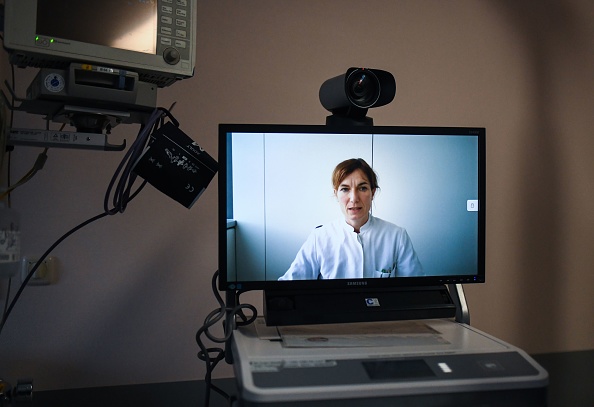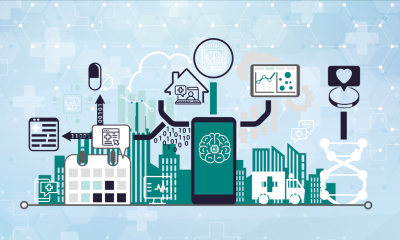In the spring of 2020, COVID-19 brought rising levels of stress, anxiety and depression. But stay-at-home orders and a national emergency prompted many psychiatric and psychotherapy offices to shut down and cancel in-person appointments.
The country needed a robust – and fast – transition to mental health telemedicine. And the pandemic turned out to be just the thing to make it happen.
Changing tech, old idea
I was skeptical of telemedicine in 2015 when I began working at Wayne State University as a psychiatrist and researcher in the medical school. At that time, the department of psychiatry and its affiliated clinics were using telemedicine in primary and emergency care and for substance use recovery.
But the idea of seeing patients via video had been around since long before then. In 1973, a team of behavioral scientists studied the two-way interactive television system Massachusetts General Hospital started using in 1969. The hospital provided mental health evaluations at an off-site medical station at Logan International Airport in Boston and a Veterans Affairs hospital outside the city. “The system has proven to be feasible and acceptable to individuals and institutions in the community, providing psychiatric skills on a much wider scale, in a more accessible way, and faster than any other system,” researchers wrote in their analysis.
Telepsychiatry grew in the 1990s, providing remote mental health services to patients in rural areas, many of whom were not able to travel long distances for in-person treatment. To transmit video and sound, the systems used various technologies, including closed-circuit television, high-frequency radio waves, fiber optics, coaxial cable and phone lines.
The use of medical videoconferencing grew even more in the 2000s, particularly in psychiatry. By then, some patients were seeing their doctors with TV-top boxes connecting their televsions to what was then called the World Wide Web. Patients were generally satisfied with virtual appointments, and researchers found telepsychiatry was just as effective as face-to-face visits, for both adults and children. And even as medical teleconferencing raised concerns about patient privacy, doctor licensing and other legal issues, researchers took a fresh look at the idea previously dismissed as “unwieldy, unreliable and unaffordable.”
Enter COVID-19
As the pandemic forced lockdowns around the country, health insurance companies quickly loosened restrictions and allowed doctors to provide care remotely, regardless of geographical location. A variety of software programs, such as FaceTime, Skype and Zoom, received approval for this purpose under relaxed federal restrictions.
Acccording to a December 2021 report from the U.S. Department of Health and Human Services, the number of Medicare-covered visits conducted remotely over video rose from approximately 840,000 in 2019 to 52.7 million in 2020. Furthermore, almost all U.S. states relaxed medical licensing rules, allowing physicians to virtually see patients across state lines.
Built-in benefits
Psychiatry calls for physical examination much less often than most other medical specialties, making it ideal for telemedicine. The pandemic also had a role in allaying previous concerns about patients’ being unable or unwilling to use video technology. As remote videoconferencing became a necessary and regular part of communication with workplaces, family members and friends, patients essentially trained themselves to use it in their mental health care.
Pandemic telehealth also solved one long-standing and seemingly intractable problem: that of patients forgetting or otherwise missing their appointments. A December 2021 study found that in pandemic-era telemedicine, the no-show rate at one Ohio clinic was only 7.5%, compared with a 30% no-show rate for in-person office visits before the pandemic. Where I work, our clinic’s own 30% missed-appointment rate dropped to almost zero.
The most obvious reason for that dramatic decline was that the appointments had become more convenient. Patients don’t have to take time off work, find a babysitter, fight traffic or take a bus. With a smartphone or laptop, they can see their psychiatrists or therapists from anywhere. They can have sessions while at home near their children. They can videoconference with mental health professionals during their lunch break at work, or even from their car in the parking lot.
This has turned out to be especially useful for people with complicated work schedules, like medical personnel and first responders who are facing struggles of their own during the pandemic.
Here to stay
Telepsychiatry has also opened a window into the home environments of patients. Seeing where and how they live gives therapists and psychiatrists important insights into a patient’s mental health needs.
Reaching clients at home can also be challenging: A patient of mine was a mom with a big family in a small house. She had to connect with me sitting in her bathroom in order to have privacy. With patients connecting from anywhere, there can be concerns about confidentiality, especially for those without access to private space.
Another issue is that for some patients, the easier access of telehealth can make their visits feel like a less serious routine task rather than treatment. My colleagues and I have had to warn patients not to connect with us while driving or shopping or while in the middle of a conversation with others. Some also had to be reminded to dress appropriately for their online appointments with us; a patient showed up onscreen in a bathrobe.
And there are other glitches: Sound quality or other technical issues take time out of sessions to fix, or can’t be fixed at all. Some patients still aren’t familiar or comfortable with videoconferencing. Others did not have the necessary high-speed internet at home. For these patients, sessions often take place over the phone instead. Then we can’t see their nonverbal behavior, which is a part of assessing mental health conditions. But none of that changed the fact that telemedicine generally works for mental health care.
As COVID-19 restrictions have eased, some clinics are offering face-to-face visits again. Others are offering the option of in-person or video visits. I still see all my patients remotely, and only a couple have even brought up having sessions in person again. The pandemic gave telemedicine an opportunity to prove itself. And in psychiatry, at least, there’s more certainty about telemedicine’s place in the future of health care.
Arash Javanbakht, Associate Professor of Psychiatry, Wayne State University
This article is republished from The Conversation under a Creative Commons license. Read the original article.
















